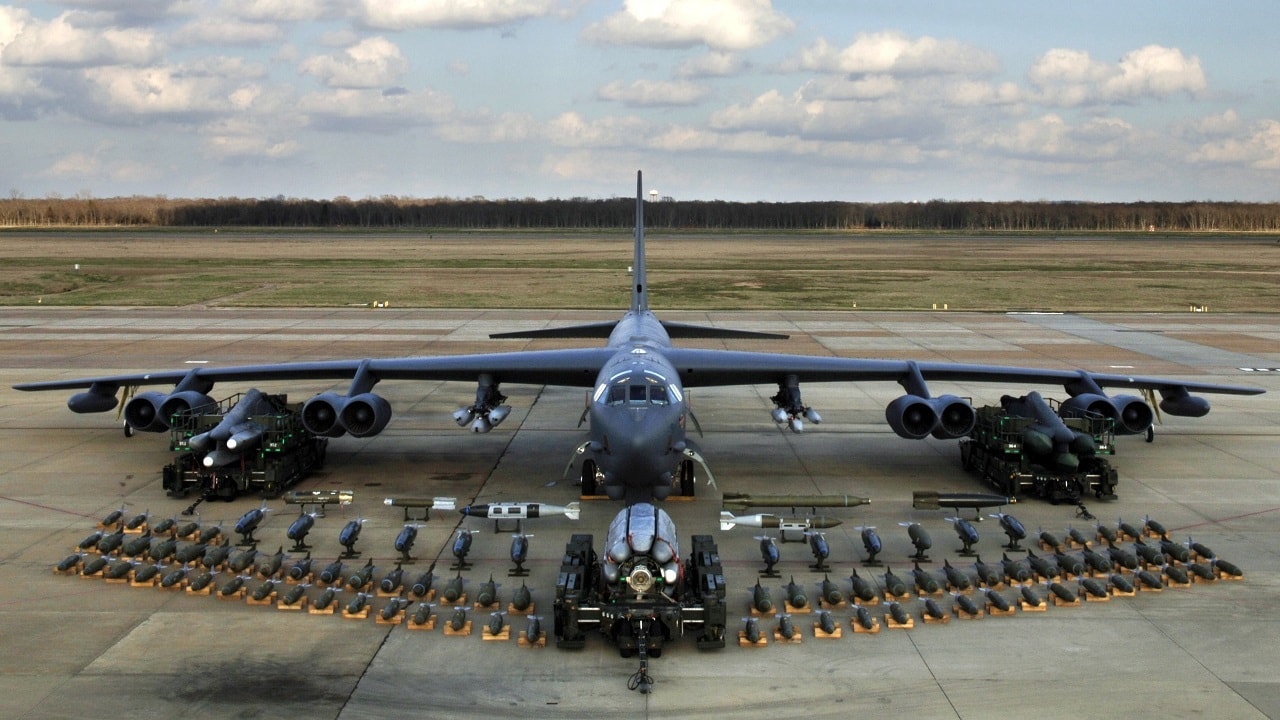Should the Air Force Even Bother With Upgrading the B-52?: The B-52 Stratofortress is being upgraded, but no matter how many times it is improved, could it be considered obsolete for 21st-century warfare?
It is an important leg of the nuclear triad. The B-52 has a sterling combat record since it first flew as the B-52A in 1954. The platform has been excellent over the decades. You usually do not hear complaints from pilots, which could be in service into the 2050s.
Have the Times Changed Too Much for the B-52?
But is it survivable in modern combat?
Perhaps it should have only stand-off missile launch roles rather than dropping bombs in contested air space. Is it a “Day One” bomber since it lacks stealth attributes? Does it have the ability to avoid all surface-to-air missiles? It also begs the question whether the money spent on the B-52 upgrades be better invested in the new B-21 bomber and the Next-Generation Air Dominance fighter?
New Engines Are Past Due
Allow me first to summarize the current updates that are going into the B-52 that could rename the bomber as the B-52J or K. This is the “largest modification program in its history.” After 72 million hours of use, the B-52 will finally get new engines. The old ones have been in service since the 1960s. Instead of the ancient Pratt & Whitney TF33 engines from the Vietnam era, there will be new Rolls Royce F130 powerplants. This will cost the Air Force $2.6 billion.
Modern Radar Is Welcome
The next upgrade will be radar, specifically a new AESA (active electronically scanned array). This will be a Raytheon AN/APG-79 system that is used by the F/A-18E/F Super Hornet and one that is similar to what is deployed on the F-15E Strike Eagle. Data from the new radar can be shared with allied airplanes. The AESA will better facilitate tracking and destroying multiple targets.
Versatile Bomber
The current B-52s can fly 8,800 miles before re-fueling with a 35-ton payload at 525 miles per hour. The bombers can deliver the goods anywhere in the world. B-52s are versatile – along with the nuclear delivery capabilities – they can launch stand-off cruise missiles. B-52s have even employed precision-guided munitions for close air support in Afghanistan. They can also collect reconnaissance data and perform electronic warfare missions.
Can It Survive the Next War?
The question is – how survivable is the B-52?
It’s not stealthy, but it can provide electronic countermeasures, towed decoys and other ways to spoof enemy air defenses. It used to drop gravity nuclear bombs that would require time over target, but the Air Force discontinued that practice in 2010.
The B-52 will eventually have the nuclear-capable Long Range Standoff Weapon (LRSO) cruise missile along with the current Joint Air-to-Surface Standoff Missile (JASSM) cruise missile that can be fired out of the range of surface-to-air missiles.
It Can Answer the Call
The next question is – how often is the B-52 available?
According to Loren Thompson writing in Forbes, the Stratofortress is more available at any given time to the Air Force than the B-1 and B-2 bombers. In 2019, the mission-capable rate for the B-52 was 66 percent, higher than the B-2 bomber’s 60 percent rate and much better than the B-1 bomber’s 46 percent availability rate, Thompson wrote.
With all of this evidence, it appears that the advantages of an updated B-52 outweigh the disadvantages and that the Air Force has answers to the myriad of questions asked previously. So, it looks like the B-52 is here to stay. The updates will improve the performance of the engines and radar. Yes, the Air Force could forego the updates and re-program the funds into the B-21 and Next-Generation Air Dominance fighter, but that probably is not necessary. The B-52 can play that stand-off missile launch role for the coming decades.
It may not be dropping bombs directly over targets, but it can punish the enemy in other ways. And that’s all the matters in modern warfare.
B-52 Photo Essay
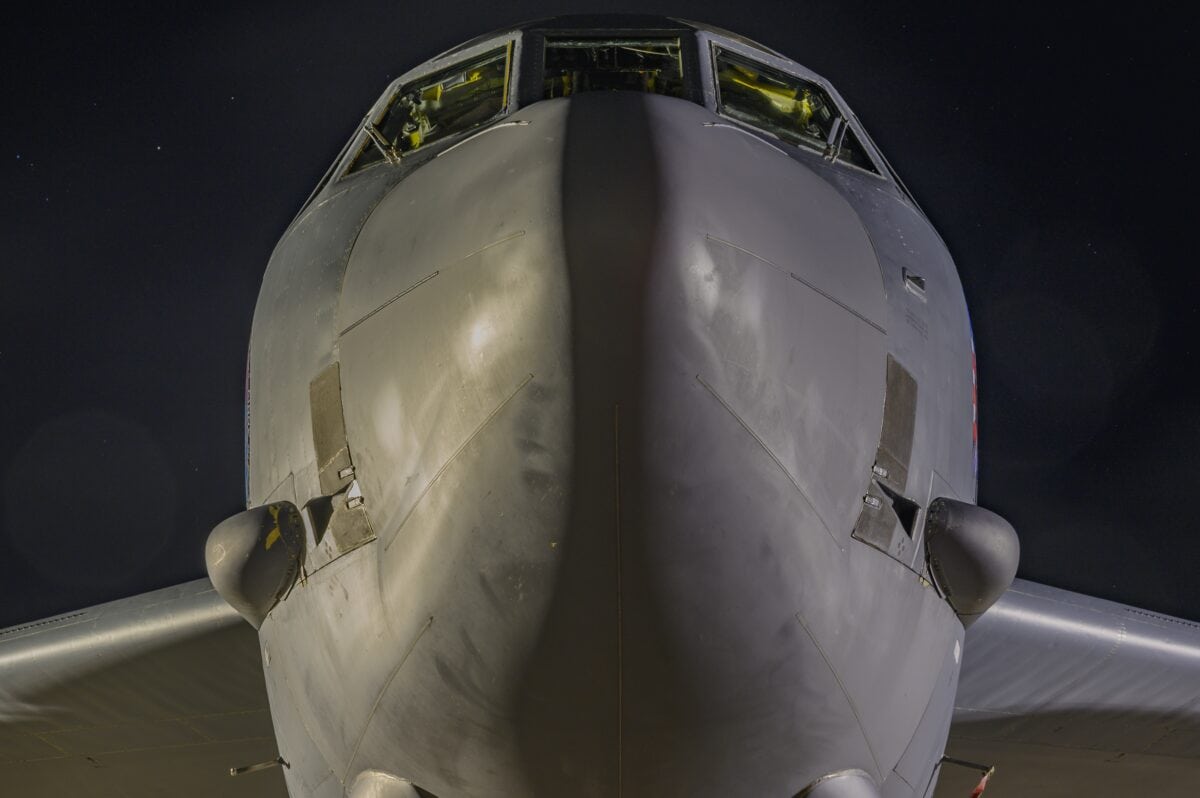
A U.S. Air Force B-52 Stratofortress assigned to Barksdale Air Force Base, La., is prepared for a Mark-82 munitions load, in support of a Bomber Task Force deployment, Feb. 1, 2020, at Andersen Air Force Base, Guam. The bomber deployment underscores the U.S. military’s commitment to regional security and demonstrates a unique ability to rapidly deploy on short notice. (U.S. Air Force photo by Senior Airman Jacob M. Thompson)
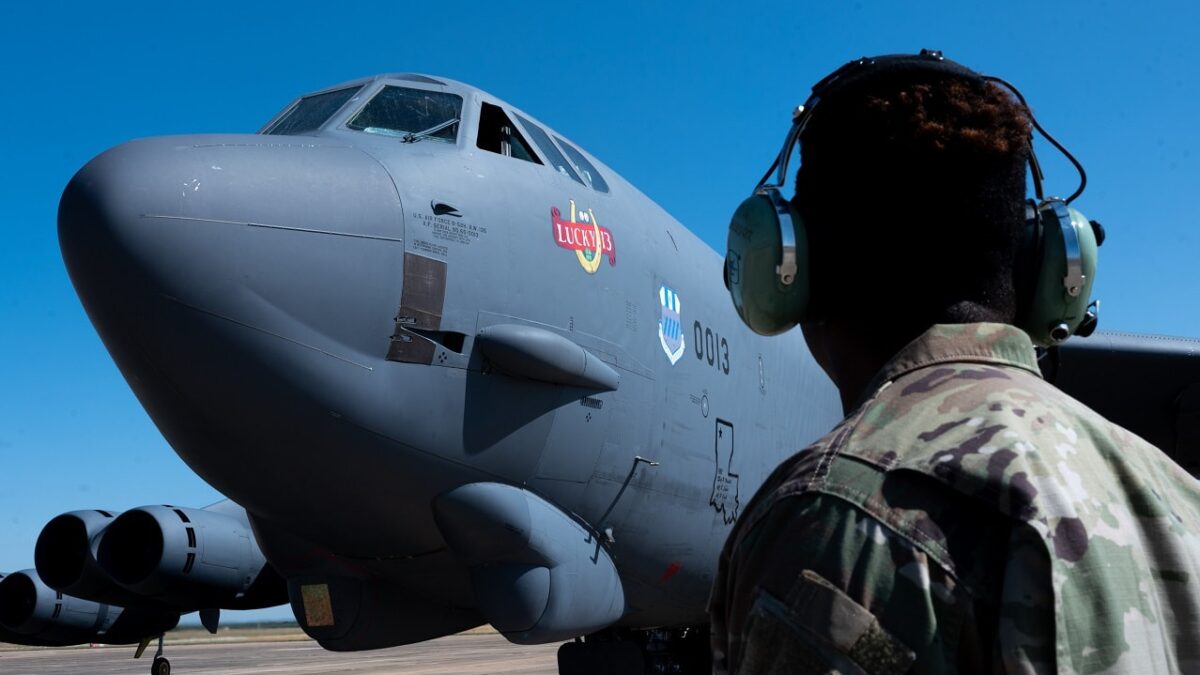
A U.S. Air Force maintainer conducts a visual inspection of a B-52H Stratofortress at Morón Air Base, Spain in support of Bomber Task Force 21-3, May 24, 2021. Strategic bomber missions enhance the readiness and training necessary to respond to any potential crisis or challenge across the globe. (U.S. Air Force photo by Staff Sgt. Jason Allred)
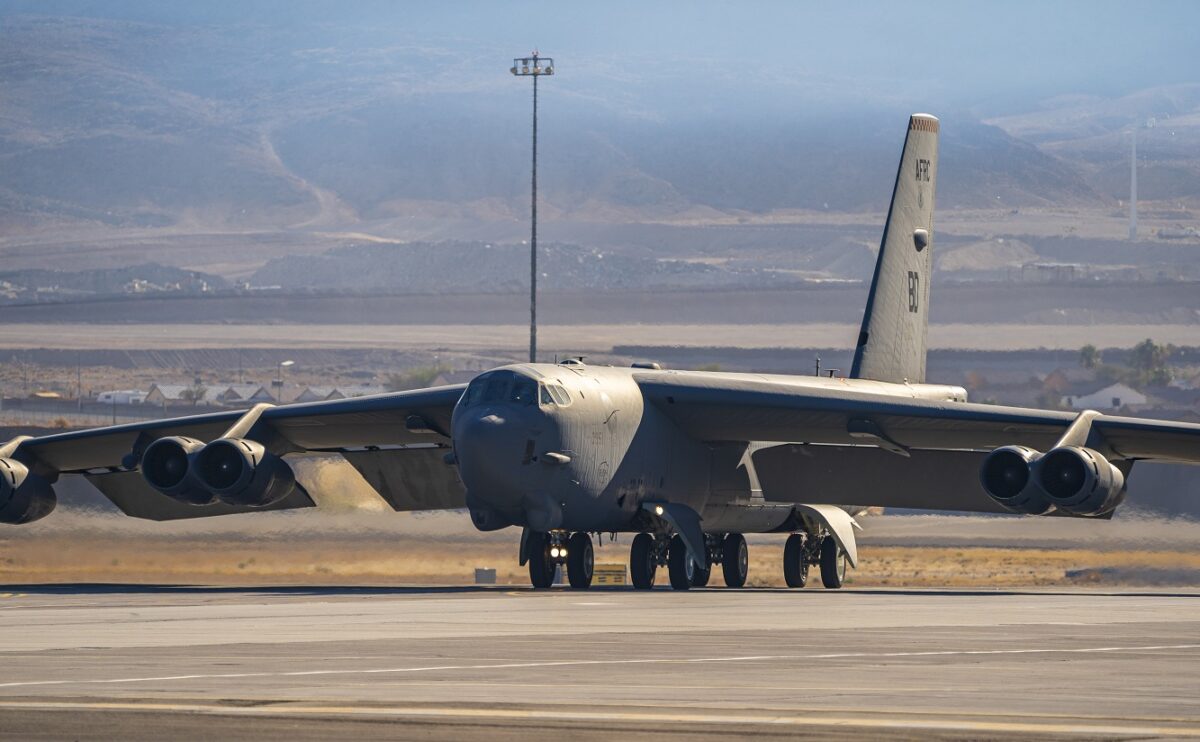
A B-52 Stratofortress bomber aircraft assigned to the 340th Weapons Squadron at Barksdale Air Force Base, Louisiana, taxis to take off during a U.S. Air Force Weapons School Integration exercise at Nellis AFB, Nevada, Nov. 30, 2021. The U.S. Air Force Weapons School teaches graduate-level instructor courses that provide advanced training in weapons and tactics employment to officers and enlisted specialists of the combat and mobility air forces. (U.S. Air Force photo by William Lewis)
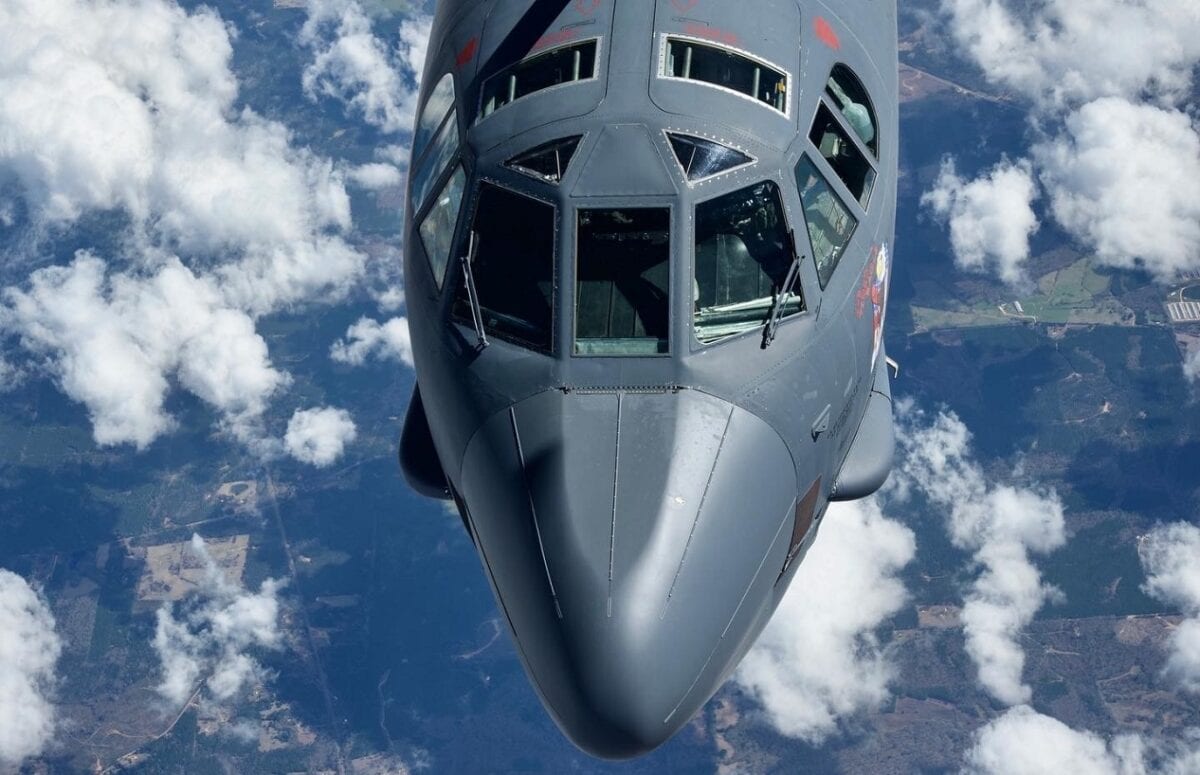
A U.S. Air Force KC-135 Stratotanker with the 927th Air Refueling Wing, Florida refuels a B-52 Stratofortress with the Barksdale Air Force Base, Louisiana, on February 26, 2021. On this mission there were two Stratotankers that refueled three Stratofortresses. (U.S. Air Force photo by Tiffany A. Emery)
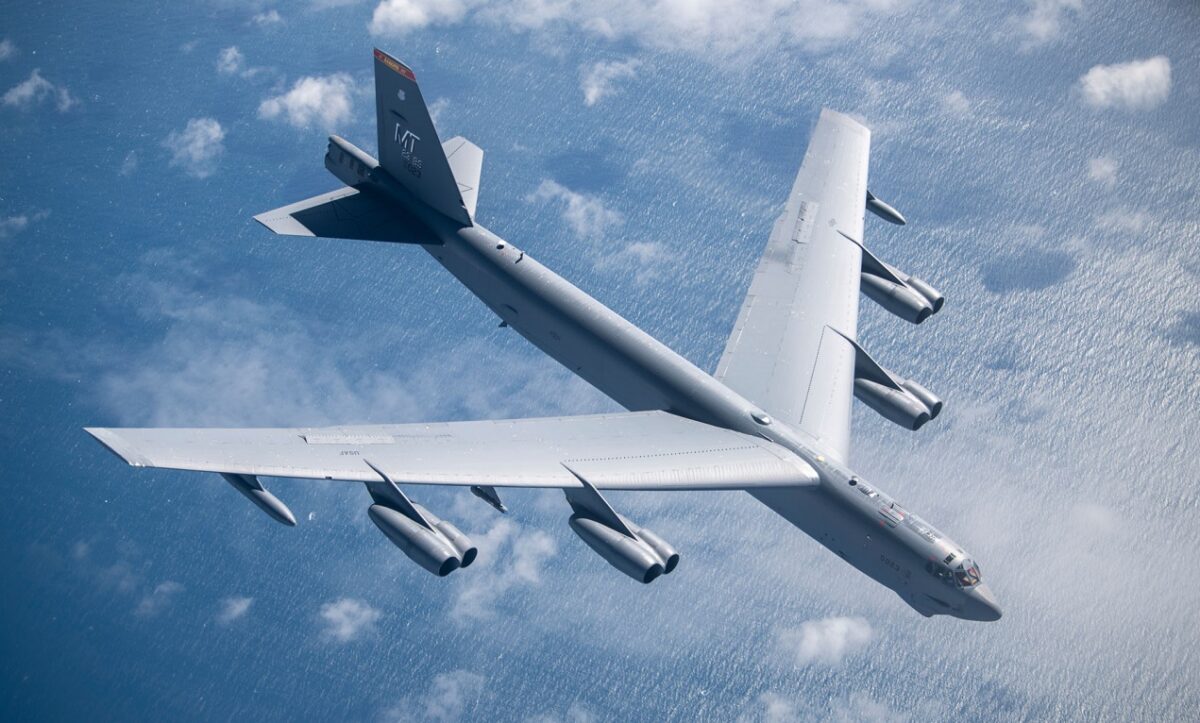
B-52 Bomber. Image Credit: US Air Force.
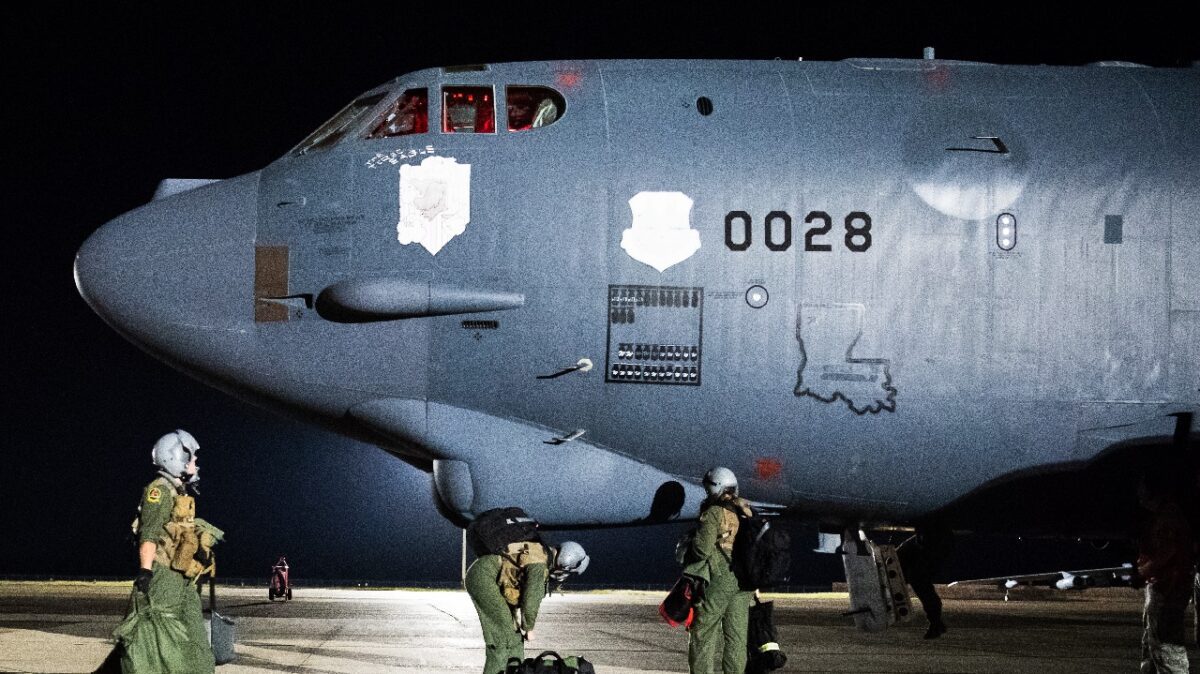
Airmen from the 96th Bomb Sqaudron load gear onto a B-52H Stratofortress at Barksdale Air Force Base, La., Oct. 13, 2020. The crew took part in a NATO crossover exercise designed to increase interoperability with NATO mission partners. (U.S. Air Force photo by Airman 1st Class Jacob B. Wrightsman)
Expert Biography: Serving as 1945’s Defense and National Security Editor, Dr. Brent M. Eastwood is the author of Humans, Machines, and Data: Future Trends in Warfare. He is an Emerging Threats expert and former U.S. Army Infantry officer. You can follow him on Twitter @BMEastwood. He holds a Ph.D. in Political Science and Foreign Policy/ International Relations.

